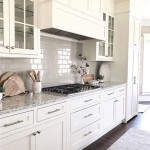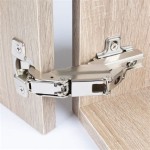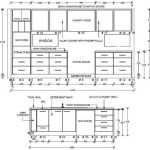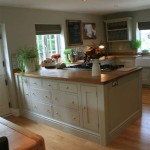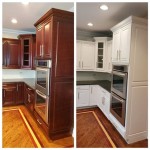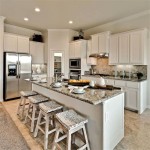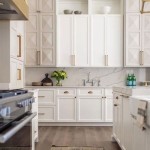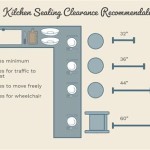Can You Make Kitchen Cabinets Out Of Plywood? A Comprehensive Guide
The question of whether kitchen cabinets can be constructed from plywood is a common one among homeowners, DIY enthusiasts, and even professional contractors. The short answer is yes, plywood is a viable and frequently used material for kitchen cabinet construction. However, the suitability of plywood depends on several factors, including the grade of plywood, the type of construction, and desired aesthetic. This article will explore the advantages and disadvantages of using plywood for kitchen cabinets, discuss the different types of plywood suitable for cabinet making, offer guidance on cabinet construction techniques, and provide insights into finishing options.
Plywood is an engineered wood product made by gluing together multiple layers of wood veneer, called plies. These plies are arranged with alternating grain directions, which significantly increases the strength and stability of the resulting sheet. This cross-graining is what distinguishes plywood from solid wood, and it contributes to its resistance to warping, shrinking, and cracking. Consequently, plywood offers advantages over solid wood for certain applications, particularly in cabinet making where dimensional stability is crucial.
Despite its advantages, plywood also has limitations. The edges of plywood sheets can be less attractive than solid wood, requiring edge banding or other treatments to create a finished look. Furthermore, the quality of plywood can vary significantly depending on the type of wood used, the thickness of the plies, and the quality of the adhesive. Selecting the right type of plywood is therefore essential for ensuring the longevity and performance of kitchen cabinets.
Understanding the Advantages and Disadvantages of Plywood Cabinets
The decision to use plywood for kitchen cabinets should be based on a careful evaluation of its advantages and disadvantages relative to other materials, such as solid wood or particleboard. Understanding these factors will help ensure that the chosen material meets the specific requirements of the kitchen design and the homeowner's preferences.
One of the primary advantages of plywood is its strength and stability. The cross-grained construction makes it significantly less prone to warping or splitting than solid wood. This is particularly important in kitchen environments where temperature and humidity fluctuations can be significant. Cabinets made from plywood are more likely to maintain their shape and structural integrity over time, reducing the risk of doors and drawers becoming misaligned or difficult to operate.
Another advantage of plywood is its cost-effectiveness. In many cases, plywood can be more affordable than solid wood, especially for large cabinet projects. This can be a significant factor for homeowners on a budget. However, it's important to compare the cost of different grades of plywood, as premium-grade plywood can be more expensive.
Plywood also offers versatility in terms of finishing options. It can be painted, stained, or covered with veneer to achieve a wide range of aesthetics. This allows homeowners to customize their cabinets to match their desired style and décor. Furthermore, plywood is relatively easy to work with, making it a suitable material for both professional cabinet makers and DIY enthusiasts.
Despite these advantages, plywood also has some drawbacks. The edges of plywood sheets can be unsightly, requiring edge banding or other finishing treatments. This can add time and expense to the cabinet-making process. However, with careful planning and execution, the edges can be effectively concealed or enhanced to create a polished look.
Another potential disadvantage of plywood is its susceptibility to moisture damage if not properly sealed. While plywood is generally more water-resistant than particleboard, prolonged exposure to moisture can cause it to delaminate or rot. It's therefore crucial to use a waterproof adhesive and apply a protective finish to all surfaces, including the edges, of the plywood to prevent moisture penetration.
Finally, the quality of plywood can vary significantly. Lower-grade plywood may have voids or imperfections in the plies, which can affect its strength and appearance. It's therefore important to select a high-quality grade of plywood from a reputable supplier to ensure the longevity and performance of the cabinets.
Selecting the Right Type of Plywood for Kitchen Cabinets
Choosing the appropriate type of plywood is crucial for ensuring the durability and aesthetics of kitchen cabinets. Different types of plywood are available, each with its own characteristics and suitability for specific applications. Factors to consider when selecting plywood include the type of wood used, the thickness of the plies, the quality of the adhesive, and the grade of the plywood.
Hardwood plywood, such as birch, maple, or oak, is often preferred for kitchen cabinets due to its strength, durability, and attractive grain patterns. Hardwood plywood is typically more expensive than softwood plywood, but it offers a superior finish and is more resistant to wear and tear. Birch plywood is a popular choice for paint-grade cabinets, while maple and oak plywood are often used for stain-grade cabinets to showcase the natural beauty of the wood.
Softwood plywood, such as pine or fir, is a more affordable option for kitchen cabinets. However, it is generally less durable and has a less attractive grain pattern than hardwood plywood. Softwood plywood is often used for the interior components of cabinets, such as shelves and drawer boxes, where appearance is less critical.
Marine-grade plywood is a high-quality type of plywood that is specifically designed for use in marine environments. It is made with waterproof adhesive and is highly resistant to moisture damage. While marine-grade plywood is more expensive than other types of plywood, it can be a good choice for cabinets that will be exposed to high levels of humidity or moisture, such as those located near a sink or dishwasher. Bending plywood, which is very flexible, would not be suitable for cabinet construction due to its lack of rigidity.
The thickness of the plywood is another important factor to consider. For cabinet carcasses, a thickness of ¾ inch (19 mm) is generally recommended to provide adequate strength and stability. For cabinet doors and drawer fronts, a thickness of ½ inch (12 mm) or ¾ inch (19 mm) may be used, depending on the design and size of the component. Thinner plywood can be used for cabinet backs and drawer bottoms.
The grade of the plywood refers to its appearance and quality. Plywood is typically graded using a letter system, with A being the highest grade and D being the lowest. A-grade plywood is virtually free of defects and is ideal for surfaces that will be visible, such as cabinet doors and drawer fronts. B-grade plywood may have some minor defects, such as small knots or patches, but is still suitable for visible surfaces. C-grade and D-grade plywood are typically used for interior components or surfaces that will be covered with veneer or laminate.
Cabinet Construction Techniques Using Plywood
Constructing kitchen cabinets from plywood requires careful planning and execution to ensure a professional and durable result. Several different construction techniques can be used, each with its own advantages and disadvantages. The choice of technique will depend on factors such as the desired aesthetic, the skill level of the builder, and the available tools.
One common technique is to use butt joints to connect the plywood panels. Butt joints are simple to make, but they are not very strong without reinforcement. They are typically used in conjunction with screws, nails, or glue to create a secure connection. For added strength, butt joints can be reinforced with cleats or corner blocks. A well-glued and screwed butt joint can provide adequate strength for many cabinet applications.
Another popular technique is to use dado joints. A dado is a groove cut into one piece of plywood to receive the edge of another piece. Dado joints are stronger than butt joints and provide a more precise fit. They are often used to connect cabinet sides to shelves or to create drawer boxes. Creating a dado requires specialized tools such as a router or table saw equipped with a dado blade. The resulting joint is visually appealing and structurally sound.
Rabbet joints are similar to dado joints, but the groove is cut along the edge of the plywood panel. Rabbet joints are often used to attach cabinet backs to the sides or to create drawer fronts. Like dado joints, rabbet joints provide a strong and precise connection. They can be cut using a router or table saw.
Pocket-hole joinery is another popular technique for constructing plywood cabinets. Pocket holes are drilled at an angle into one piece of plywood, and screws are then driven through the pocket holes into the adjacent piece. Pocket-hole joinery is relatively easy to learn and requires minimal specialized tools. It is a good option for DIY enthusiasts who want to build cabinets without investing in expensive equipment. Pocket-hole screws are readily available and provide a strong and secure connection.
Regardless of the construction technique used, it is important to use high-quality adhesive to bond the plywood panels together. Wood glue is a good choice for most cabinet-making applications. It should be applied liberally to all mating surfaces and clamped until the glue has dried. Waterproof adhesive should be used for cabinets that will be exposed to moisture.
In addition to the joinery techniques, it is also important to pay attention to the overall design and construction of the cabinets. The cabinets should be square and level, and all edges should be smooth and flush. Attention to detail will result in cabinets that are not only durable but also aesthetically pleasing.

How To Choose The Right Kitchen Cabinet Materials For Your Project Architizer Journal

A Plywood Kitchen Is Loaded With Personality Sweeten Com

Which Plywood Is Best For Modular Kitchen Designcafe

Diy Kitchen Cabinets Made From Only Plywood

Best Cabinet For Kitchen Plywood Cabinets Choice

What Plywood Is Best For Building Cabinets Precision

Which Plywood Is Best For Modular Kitchen Designcafe

Diy Cabinet Doors How To Update Your Kitchen With Plywood Real Homes

3 Types Of Plywood For Cabinets Kitchen Abbotsford

Modern Plywood Kitchen Designs For Your Home Design Cafe
Related Posts

